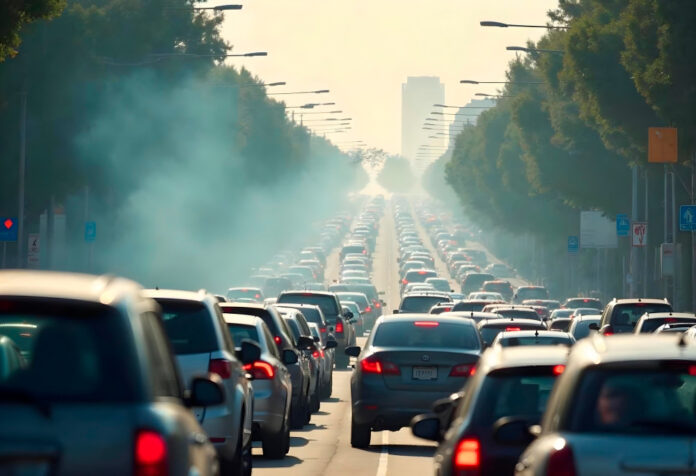If you’ve ever sat through seemingly endless red lights at a traffic intersection, resignation slowly turning into frustration, you’re not alone. But more than just a test of driver patience, these pauses contribute significantly to urban carbon emissions. Indeed, unproductive vehicle idling accounts for as much as 15 percent of CO2 emissions from U.S. land transportation. However, a new wave of research led by MIT is proposing a promising intervention: an AI-powered eco-driving strategy that could significantly reduce these emissions, potentially revolutionizing how we think about urban traffic management.
The Problem with Symmetry in Machine Learning
In the sphere of machine learning, symmetry refers to patterns or operations that remain unchanged under certain conditions. Consider a spherical object; no matter how you rotate it, its appearance remains unchanged. This simple idea of symmetry can pose complex challenges when applied to data in machine learning, especially when such data is meant to mimic real-world variability—like city traffic dynamics across thousands of intersections.
Most current machine learning models struggle with symmetric data because they require clear, distinguishable patterns to learn effectively. Symmetry in data can lead to misinterpretations, inefficient models, and even faulty predictions. That’s because when data looks the same from different perspectives, models may have trouble disambiguating which factors to attribute to different outcomes. As a result, traditional models may underperform in tackling dynamic and interdependent systems like urban traffic.
Breaking the Symmetric Impasse with Deep Reinforcement Learning
Remarkably, recent breakthroughs at MIT capitalize on deep reinforcement learning—a form of AI that learns optimal behaviours by interacting with environments. In a novel study, researchers applied this technique to eco-driving, a vehicle-based traffic control strategy aimed at curbing emissions by dynamically adjusting speeds to minimize unnecessary acceleration and idling at intersections.
Dr. Cathy Wu, the senior author and the Class of 1954 Career Development Associate Professor at MIT, emphasizes, “We’ve shown here that modern machine-learning tools, like deep reinforcement learning, can accelerate the kinds of analyses that support sociotechnical decision making.”
For this study, researchers embarked on one of the most comprehensive traffic emission modeling exercises to date. They examined over 6,000 intersections in Atlanta, San Francisco, and Los Angeles—analyzing 33 emission-influencing factors from vehicle age to road topology. Using deep reinforcement learning, which optimizes driving behaviors through trial-and-error and rewards energy-efficient solutions, they assessed millions of traffic scenarios to find the most effective eco-driving strategies.
Real-World Implications: Transforming Transportation and Environmental Health
The outcomes from MIT’s study suggest that full adoption of eco-driving practices could cut intersection-based emissions by 11 to 22 percent annually, without compromising traffic flow or safety. Even partial adoption can yield significant gains: just 10 percent implementation could achieve 25 to 50 percent of the potential emission reductions.
The research team, including graduate students Vindula Jayawardana, Ao Qu, Cameron Hickert, Edgar Sanchez, and undergraduate Catherine Tang, highlighted intriguing downstream effects: even non-eco-driven vehicles can benefit. Non-participating cars often mimic the speed patterns of eco-driven vehicles, inadvertently adopting more efficient driving behaviors. Such results indicate that gradual integration of eco-driving features—possibly via simple smartphone apps offering real-time speed guidance—can begin reaping environmental and public health benefits sooner rather than later.
Key Collaborators and Visionaries
The study was co-authored with international collaborators and bolstered by insights from organizations like the Utah Department of Transportation. As Hesham Rakha, a professor from Virginia Tech not involved in the study, observes, “This is a great research effort that will serve as a key reference for others to build on in assessing eco-driving systems.”
Looking ahead, the fusion of AI-driven eco-driving with autonomous vehicle technology and green-energy solutions—such as electric vehicles—holds immense potential. For instance, combining eco-driving with a projected rise in hybrid and electric vehicles in cities like San Francisco could slash emissions by 17 percent, according to this framework.
A New Era for Machine Learning and Urban Mobility
The new approach offers a glimpse into the transformative power of aligning machine learning capabilities with sustainable urban development goals. It demonstrates that with thoughtful application and minimal infrastructure changes, AI technologies can meaningfully advance environmental objectives.
“We already have smartphones in our cars, and we are rapidly adopting cars with more advanced automation features,” reflects Wu. “For something to scale quickly in practice, it must be relatively simple to implement and shovel-ready. Eco-driving fits that bill.”
This groundbreaking work, partly funded by Amazon and the Utah Department of Transportation, illustrates the harbingers of a future where seamless traffic flow converges with environmental stewardship—an exciting horizon for machine learning and its role in nurturing future-ready cities.



